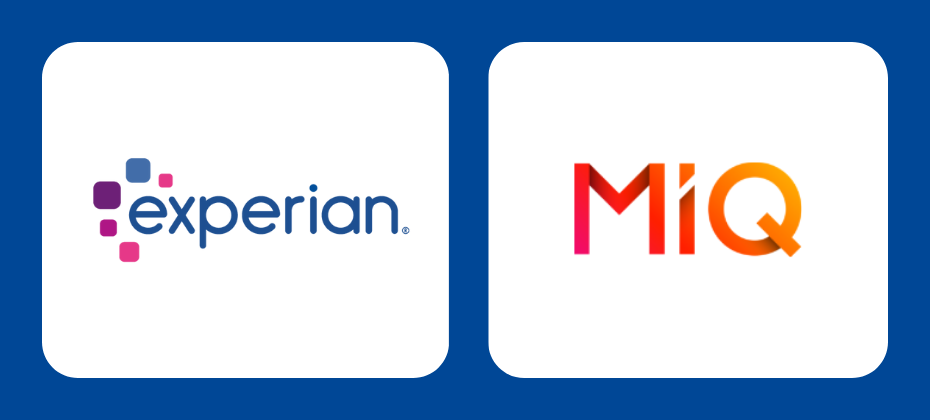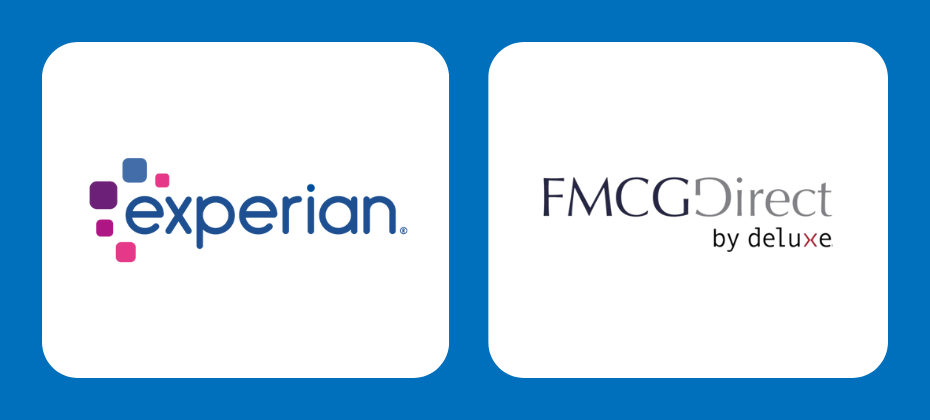“Lorem ipsum dolor sit amet, consectetur adipiscing elit, sed do eiusmod tempor incididunt ut labore et dolore magna aliqua. Ut enim ad minim veniam, quis nostrud exercitation ullamco laboris nisi ut aliquip ex ea commodo consequat. Duis aute irure dolor in reprehenderit in voluptate velit esse cillum dolore eu fugiat nulla pariatur. Excepteur sint occaecat cupidatat non proident, sunt in culpa qui officia deserunt mollit anim id est laborum.”

“Lorem ipsum dolor sit amet, consectetur adipiscing elit, sed do eiusmod tempor incididunt ut labore et dolore magna aliqua. Ut enim ad minim veniam, quis nostrud exercitation ullamco laboris nisi ut aliquip ex ea commodo consequat. Duis aute irure dolor in reprehenderit in voluptate velit esse cillum dolore eu fugiat nulla pariatur. Excepteur sint occaecat cupidatat non proident, sunt in culpa qui officia deserunt mollit anim id est laborum.”
“Lorem ipsum dolor sit amet, consectetur adipiscing elit, sed do eiusmod tempor incididunt ut labore et dolore magna aliqua. Ut enim ad minim veniam, quis nostrud exercitation ullamco laboris nisi ut aliquip ex ea commodo consequat. Duis aute irure dolor in reprehenderit in voluptate velit esse cillum dolore eu fugiat nulla pariatur. Excepteur sint occaecat cupidatat non proident, sunt in culpa qui officia deserunt mollit anim id est laborum.”

“Lorem ipsum dolor sit amet, consectetur adipiscing elit, sed do eiusmod tempor incididunt ut labore et dolore magna aliqua. Ut enim ad minim veniam, quis nostrud exercitation ullamco laboris nisi ut aliquip ex ea commodo consequat. Duis aute irure dolor in reprehenderit in voluptate velit esse cillum dolore eu fugiat nulla pariatur. Excepteur sint occaecat cupidatat non proident, sunt in culpa qui officia deserunt mollit anim id est laborum.”
test page quote
“Lorem ipsum dolor sit amet, consectetur adipiscing elit, sed do eiusmod tempor incididunt ut labore et dolore magna aliqua. Ut enim ad minim veniam, quis nostrud exercitation ullamco laboris nisi ut aliquip ex ea commodo consequat. Duis aute irure dolor in reprehenderit in voluptate velit esse cillum dolore eu fugiat nulla pariatur. Excepteur sint occaecat cupidatat non proident, sunt in culpa qui officia deserunt mollit anim id est laborum.”
My Heading Test

“Lorem ipsum dolor sit amet, consectetur adipiscing elit, sed do eiusmod tempor incididunt ut labore et dolore magna aliqua. Ut enim ad minim veniam, quis nostrud exercitation ullamco laboris nisi ut aliquip ex ea commodo consequat. Duis aute irure dolor in reprehenderit in voluptate velit esse cillum dolore eu fugiat nulla pariatur. Excepteur sint occaecat cupidatat non proident, sunt in culpa qui officia deserunt mollit anim id est laborum.”
veniam, quis nostrud exercitation ullamco laboris nisi ut aliquip ex ea commodo consequat. Duis aute irure dolor in reprehenderit in voluptate velit esse cillum dolore eu fugiat nulla pariatur.
Excepteur sint occaecat cupidatat non proident, sunt in culpa qui officia deserunt mollit anim id est laborumExcepteur sint occaecat cupidatat non proident, sunt in culpa qui officia deserunt mollit anim id est laborumExcepteur sint occaecat cupidatat non proident, sunt in culpa qui officia deserunt mollit anim id est laborum

In this article… What is cookie deprecation? Google Chrome’s cookie phase-out impact Challenges posed by Google’s cookie deprecation in 2024 Adapting to a cookieless world Best practices for marketers in the post-cookie era Third-party cookies have been the foundation of targeted advertising for a long time. Around 75% of marketers worldwide rely on third-party cookies, with approximately 42.2% of websites using them to gather user data. These tiny bits of code silently track our online activities, collecting search history and product preferences to help advertisers tailor their campaigns to our needs. However, as fears over online privacy have grown, the third-party cookie era is ending. A 2020 Deloitte survey revealed that 65% of respondents had major concerns about excessive cookie use; consumers want personalized ad experiences but don’t want to feel like marketers are tracking their every online move. While some other search engines have already eliminated third-party cookies, Google Chrome — which holds 65% of the global browser market — is just beginning to phase them out as new alternatives are tested. Google’s third-party cookie deprecation is expected to impact marketers in a big way. Let’s talk about what that impact will look like and how marketers can reconcile consumer demands for browsing privacy with their preference for personalized ad experiences. What is cookie deprecation? Cookie deprecation is a process where web browsers, like Google Chrome, phase out the use of a specific cookie type. In the context of this article, we’re referring to third-party cookies, small pieces of data stored on a device by websites a person visits. Advertisers and other companies use third-party cookies to track a person’s actions on the web. They help those companies learn about an individual’s interests and show them targeted ads. But over time, internet users have become more aware of cookies and how much companies know about them, so browsers are phasing out third-party cookies to respect user privacy. The timeline and reasons behind the shift In January 2020, Google announced it would no longer allow third-party marketing cookies by 2022. Realizing it needed to find an alternative first, it pushed the deadline back several times over the years, eventually confirming that third-party cookies would be deprecated by the end of 2024 — a big deal for the advertising industry. So, what’s the motivation behind this change? Many people are becoming increasingly worried about online privacy and the intrusiveness of third-party cookies. In recent years, lawmakers have pressured tech companies to make changes in response to their constituents’ concerns about online privacy rights. By getting rid of third-party cookies, browsers like Chrome are trying to give users more control over their data and respect privacy demands to create a more privacy-friendly browsing experience. This shift is part of a broader trend in the digital world toward greater privacy protections, with browsers like Firefox and Safari having already phased out third-party cookies. We've also seen other significant moves in this direction, including the following. These regulatory efforts reflect a growing awareness of how important it is to protect data privacy and consumer rights in a world gone digital. Apple's App Tracking Transparency (ATT) framework was introduced in iOS 14.5, requiring users to get permission before tracking their data across other apps or websites. The Global Privacy Control (GPC) strives to improve users’ control over their internet privacy by letting them signal their preferences for data sharing. Europe’s General Data Protection Regulation (GDPR) and California’s Consumer Privacy Act (CCPA) have strict guidelines for how companies handle personal data to prioritize transparency and user consent. Google's most popular browser, Chrome, recently made its first big move toward third-party cookie deprecation. On January 4, 2024, Google announced the rollout of a new "Tracking Protection" feature, limiting cross-site tracking by default. They're doing this gradually, activating the feature for 1% of random Chrome users worldwide, about 30 million people. Google Chrome’s cookie phase-out impact Chrome’s third-party cookie deprecation is expected to have the farthest-reaching consequences for marketers like you, as it has almost two-thirds of the browser market worldwide. It's important to note that this phase-out specifically targets third-party cookies, not first-party cookies, which are generated and stored by the website a user visits directly and will be unaffected by this change. Here are a few of the impacts to prepare for. Reduced tracking capabilities Once third-party cookies are eliminated, you may face challenges in understanding consumer behavior across different websites. Without this tracking capability, understanding your audiences and effectively tailoring advertising campaigns might become more difficult. Required shift in strategy It will be key for you to adapt your advertising strategies to rely less on third-party data and more on alternative targeting methods. This shift may involve greater emphasis on contextual advertising, which targets people based on the content of the websites they visit instead of browsing history, and first-party data gathered directly from site users to personalize advertising campaigns. Additionally, in order to move beyond reliance on cookies and third-party identifiers, activation platforms like demand-side platforms (DSPs) must evolve to identify addressable IDs within bid streams. This adaptability is essential as digital advertising shifts toward privacy and cookieless environments. By being able to recognize addressable IDs in bid streams, DSPs can help facilitate more accurate, personalized targeting and help advertisers reach their audiences across channels and devices without privacy concerns. As a marketer, you should understand the capabilities of your chosen platforms and inquire about their support for evolving targeting methods and data sources. New compliance regulations By limiting the ability to track users across the web, Google aims to enhance user privacy and control over their data. You’ll need to embrace privacy-centric approaches to advertising to comply with evolving privacy regulations and build trust with consumers. Challenges posed by Google’s cookie deprecation in 2024 Marketers are responding to the announcement of third-party cookie deprecation with an eye toward innovation as they proactively seek new solutions. As of early 2024, 56% of marketers in the United States were testing cookieless alternatives. Knowing their customer acquisition will be less efficient without these cookies, they’re looking for ways to maximize the value of their existing customers, increase retention, and make better use of first-party data. Others have been slow to react due to a lack of awareness or uncertainty about how to handle the changes. Here are some additional challenges advertisers can expect to face as third-party cookies begin to be phased out. Impact on targeting and personalization The decline of third-party cookies is expected to have a major impact on targeting and personalization strategies. As advertisers will no longer have access to individual browsing histories, some may struggle to reach specific audiences and deliver personalized content. As a result, they have begun to explore using first-party data and contextual targeting to preserve relevance and consumer engagement. Attribution and measurement challenges The future removal of third-party cookies may also make it harder to measure the effectiveness of advertising and accurately attribute conversions. Marketers are currently searching for reliable alternatives to track users across channels and touchpoints. Google's Attribution Reporting API and private aggregation methods are being explored as potential solutions to these attribution and measurement challenges. Data privacy and compliance challenges Future third-party cookie deprecation makes data privacy and compliance a top priority. With the introduction of stricter regulations like GDPR and CCPA, you need to ensure your data collection and usage practices comply with privacy laws. To maintain the trust of consumers and abide by regulatory requirements, it has become essential to shift toward first-party data collection and more transparent consent mechanisms. Lack of resources to invest in alternative solutions One of the main challenges advertisers will face with future cookie deprecation is a lack of resources to invest in alternative solutions. Many businesses don’t have the financial resources or technical expertise to explore and implement new targeting and measurement methods. Additionally, some companies have been reluctant to adopt new solutions because they want to thoroughly test and evaluate their efficacy. The fear of investing resources in unproven technologies or strategies has led to a cautious approach among marketers and advertisers. However, this reluctance to adapt could hinder their ability to remain competitive. Many companies may also face logistical challenges due to the complexity of transitioning from reliance on third-party cookies to alternative data sources and targeting methods. Integrating new technologies, adjusting workflows, and retraining staff requires time and effort, adding to the complexity of the transition. Adapting to a cookieless world Even though third-party cookies are going away, you still have other types of data in your arsenal to help you continue reaching your audience. Use first-party data First-party data, collected from customers or website visitors directly, offers valuable insights into consumer behavior and preferences. By investing in proven data collection methods and analytics tools, you can understand your audience more accurately and tailor your messaging and targeting accordingly. Explore Experian’s signal-agnostic products Experian is leading the charge in preparing marketers for a cookieless world with our audiences and foundation built from over 200 offline data sources. Our signal-agnostic Graph supports universal IDs and enables brands to expand their existing IDs to all other digital and addressable IDs within our Graph. Advertisers can enhance their strategies by working with Experian to enrich first-party data with our demographic and behavioral attributes to gain a better understanding of audiences without cookies. Additionally, our data collaboration solutions enable marketers to collaborate with partner data, deriving greater value and enabling deeper insights for effective marketing campaigns. Experian is future-proofing identity strategies to ensure continued marketing performance and success. Discover alternative targeting technologies As third-party cookies become obsolete, marketers are starting to investigate alternative targeting technologies for optimizing campaigns. These may include contextual targeting, which focuses on the content and context of a user's web browsing activity, as well as emerging solutions like cohort-based targeting, which groups users based on shared interests and behaviors. Think of third-party cookie deprecation as the opportunity to innovate and rethink strategies that have relied too heavily on one type of technology. Best practices for marketers in the post-cookie era Embracing best practices for a privacy-centric advertising environment can help you maintain your effectiveness and thrive in a cookieless world. Let's talk strategies to help you succeed in the post-cookie era. Focus on customer consent and transparency Having consumers opt-in to sharing their data is an excellent way to build your data pool ethically. One way to do this is by encouraging users to create accounts or log in to access exclusive content or features while providing valuable information in exchange for their data. Another way is by conducting surveys or quizzes to gather insights directly from users about their preferences, interests, and behaviors. You could also use interactive content like polls and contests to engage users and collect data. These approaches can enrich your data pool while demonstrating your commitment to respecting user privacy and preferences. Prioritize obtaining explicit consent from users before using or gathering their data for your advertising. Implement transparent data practices by clearly communicating to consumers how you’ll use their data and providing easily accessible options to manage their privacy preferences. By building trust through transparency and respecting user choices, you can forge stronger relationships with your audience. Enhance the customer experience with quality data In the future absence of third-party cookies, first-party data will be paramount in helping you understand and engage with your audience effectively. Invest in strategies that will help you collect high-quality data directly from customers, such as through interactive content, preference centers, and loyalty programs. By obtaining and using accurate, relevant data, you can provide personalized experiences that resonate with audiences and drive meaningful engagement. Collaborate with evolving technology platforms As Google's cookie deprecation reshapes advertising, it will be important to collaborate closely with technology providers and key industry players who are adapting to these changes. Make sure your chosen platforms are keeping up with the industry and offering solutions that align with the shift to cookieless environments. Partnering with platforms that are proactively addressing these challenges will make it easier to navigate the changing marketing environment and drive better results for consumers and campaigns. Prepare for the future of advertising with Experian Despite the fact that third-party cookies are going away, there’s no need to panic. This change offers new opportunities for innovation and strategic refocus. With the emergence of alternative targeting methods, such as first-party data, you can still reach your target audiences effectively while respecting user privacy. By staying proactive and utilizing your available resources, you can navigate the cookieless future with confidence and continue to drive meaningful connections with your audiences. With a robust suite of data-driven solutions and a breadth of addressable IDs, Experian can help you continue to reach and engage with your target audiences. Our Consumer Sync identity solution is signal-agnostic and empowers consistent consumer interactions, while our Consumer View data solution offers privacy-compliant data to help you connect meaningfully with consumers and reach audiences effectively. Connect with Experian today to discover how we can help you prepare for and thrive in a cookieless future. Connect with us Latest posts

As the vibrant colors of spring emerge, so do opportunities for marketers to engage with their audience in fresh and meaningful ways. Crafting effective spring advertising campaigns requires a deep understanding of your target audience. In this blog post, we'll explore five key audience categories, each presenting unique opportunities for impactful spring advertising campaigns. Spring cleaning and home improvement Embrace the energy of renewal associated with spring cleaning. Target audiences interested in home improvement and organization with Experian syndicated audiences like "Gardening Mothers" or "Home Improvement & DIY Frequent Spenders." Share tips, hacks, and products that align with the desire for a fresh start, turning mundane chores into exciting opportunities for your brand to shine. Here are 6 audience segments that you can activate to target consumers focused on spring cleaning and home improvements: Purchase Transactions > Household Goods > Frequent Spenders Purchase Predictors > Shoppers All Channels > Home Maintenance and Improvement Purchase Transactions > DIY and Advice Seekers > High Spenders Purchase Transactions > Home Improvement/DIY > High Spenders Retail Shoppers: Purchase Based > Home Improvement & DIY > Hardware & Home Improvement Retail Shoppers: Purchase Based > Shopping Behavior > Big Box and Club Stores: Walmart Frequent Spenders Gardening Spring is the time when consumers are investing in gardening equipment for lawn care. Here are a few audience segments you can activate to target consumers focused on gardening: Retail Shoppers: Purchase Based > Home Improvement & DIY > Garden & Landscaping Stores: Frequent Spenders Lifestyle and Interests (Affinity) > Hobbies > Gardening Lifestyle and Interests (Affinity) > Moms, Parents, Families > Gardening Mothers Purchase Predictors > Shoppers All Channels > Lawn and Garden Movers and new homeowners Did you know? 44% of new homeowners are between the ages of 25-39*. Improve engagement for your spring targeting by pairing our new homeowner audiences with our Demographics > Ages > 25-29, 30-34, and 35-39 syndicated audiences. Here are a few you can activate now: Life Events > New Homeowners > Last 6 Months Life Events > New Movers > Last 12 Months Mother's Day: Unveil the perfect gift Appealing to the emotion of gratitude and love, Mother's Day is a significant occasion for marketers. Activate Experian syndicated audiences such as "Mother's Day Shoppers" and "Florists & Flower Gifts High Spenders" to tailor your spring advertising campaign toward those likely to purchase heartfelt gifts. Share ideas and promotions that resonate with the nurturing and caring spirit of this celebration. Here are 6 audience segments that you can activate to target consumers getting ready to celebrate Mother's Day: Retail Shoppers: Purchase Based > Seasonal > Mothers Day Shoppers Spenders Lifestyle and Interests (Affinity) > Moms, Parents, Families > Mothers with 2+ children Mobile Location Models > Visits > Mothers Day Shoppers Lifestyle and Interests (Affinity) > Moms, Parents, Families > Moms Age 25-54 Mobile Location Models > Visits > Jewelry Retail Stores Retail Shoppers: Purchase Based > Shopping Behavior > Florists & Flower Gifts: High Spenders Father's Day: Celebrate Dads in style Highlighting the significance of paternal bonds, Father's Day is an excellent opportunity to showcase thoughtful gifts and experiences. Engage the "Father's Day Shoppers" or "Growing and Expanding families" with content and products aligned with their interests. Craft a campaign that acknowledges the varied roles fathers play and the unique gifts they would appreciate. Here are 6 audience segments that you can activate to target consumers getting ready to celebrate Father's Day: Retail Shoppers: Purchase Based > Seasonal > Fathers Day Shoppers Spenders Mobile Location Models > Visits > Fathers Day Shoppers Mosaic – Personas – Lifestyle and Interests > Group M: Families in Motion > M45 – Growing and Expanding (Young, working-class families and single parent households that live in small city residences) Geo-Indexed > Demographics > Presence of Children: Ages: 7-9 Lifestyle and Interests (Affinity) > Activities and Entertainment > Home Improvement Spenders Life Events > New Parents > Child Age 0-36 Months Plan for the 2024 TV Upfronts When gearing up for the 2024 upfronts, you can expand your TV planning by incorporating diverse audience categories into your spring advertising campaigns. It's not just about targeting a demographic; it's about captivating your unique audience. Whether it's cord cutters, ad avoiders, avid streamers, or households that watch TV together, understanding and engaging with these distinct segments is paramount. To maximize impact, use comprehensive TV data that goes beyond broad demographics. Here are 6 audience segments that you can activate as part of your TV planning strategy: Retail Shoppers: Purchase Based > Entertainment > Streaming/Video/Audio/CTV/Cable TV: Cable/Broadcast TV: Cord Cutters: Recent Retail Shoppers: Purchase Based > Entertainment > Streaming/Video/Audio/CTV/Cable TV: Streaming Video: High Spenders Television (TV) > Ad Avoiders/Ad Acceptors > Ad Avoiders Television (TV) > TV Enthusiasts > Paid TV High Spenders Television (TV) > Ad Avoiders/Ad Acceptors > Ad Acceptors Television (TV) > Household/Family Viewing > Pay TV/vMVPD Subscribers Households To find consumers who are most likely to engage with your TV ads, you can layer in our TrueTouchTM engagement channel audiences: TrueTouch: Communication Preferences > Engagement Channel Preference > Digital Video TrueTouch: Communication Preferences > Engagement Channel Preference > Streaming TV Summer preparation: Anticipate the fun ahead As spring transitions to summer, help your audience gear up for the upcoming season. Target "Summer break travelers" or "Memorial Day Shoppers" with offerings that align with their summer plans. Whether it's fashion, travel essentials, or outdoor gear, position your brand as an essential companion for their summer adventures. Here are 6 audience segments that you can activate to target consumers getting ready for summer: Mobile Location Models > Visits > Summer Break Travelers Retail Shoppers: Purchase Based > Seasonal > Summer Sales Event Shoppers: Independence Day Shoppers Retail Shoppers: Purchase Based > Travel > Vacation/Leisure Travelers: Summer Trips Mosaic – Personas – Lifestyle and Interests > Group B: Flourishing Families > B09 – Family Fun-tastic (Upscale, middle-aged families with older children that live in suburban areas and lead busy lives focused on their children) Mobile Location Models > Visits > Memorial Day Shoppers Retail Shoppers: Purchase Based > Seasonal > Summer Sales Event Shoppers: High Spenders: Memorial Day Shoppers Did you know? Consumers between the age of 45-49 make up the largest percentage of top apparel shoppers*. Improve engagement for summer apparel shopping targeting by refining your audience with our Demographics > Ages > 45-49 syndicated audience. Spring into effective advertising with Experian’s syndicated audiences For spring advertising campaigns, understanding your audience is the key to success. By activating Experian's syndicated audiences, you can refine your approach and resonate by activating specific segments. Embrace our syndicated audiences so you deliver campaigns that not only capture attention but also build lasting connections with your audience. As you embark on this spring marketing journey, remember – the possibilities are as endless as the blossoming flowers. Connect with our audience team You can activate our syndicated audiences on-the-shelf of most major platforms. For a full list of Experian's syndicated audiences and activation destinations, download our syndicated audiences guide below. Download our syndicated audiences guide Check out other seasonal audiences you can activate today. Take me there Footnote *Experian looked at our demographic and purchase-based data to understand retail trends over the past year. Our demographic and purchase-based data covers credit and debit card usage across 500 top merchants. Latest posts

In the post-cookie landscape, staying ahead requires innovative strategies and partnerships. This case study dives into how MiQ, a leader in the cookieless era, strengthened its Identity Spine with the integration of Experian's cross-device Graph. Challenge MiQ faced a pivotal challenge in avoiding a static approach to strategies and partners while evolving its cookieless initiatives. MiQ aimed to build omnichannel interoperability by integrating privacy-first partners into its Identity Spine. MiQ's primary objectives included: Reaching target audiences in privacy-compliant ways. Expanding their cookieless targeting solutions. Maintaining or increasing the scale expected from cookie-based targeting. Solution To address these challenges, MiQ strategically incorporated Experian's cross-device Graph into its proprietary Identity Spine. MiQ's Identity Spine seamlessly connects over 60 cookieless data feeds and 25 ID solutions. The integration allowed MiQ to: Create a unified view: MiQ now has a unified view of its clients' target audiences, enhancing its understanding and targeting capabilities. Increase scale: By matching first-party data to multiple universal IDs, MiQ expanded its reach across devices, contributing to a 51% increase in seed audience reach and a 64% increase in universal IDs. Improve efficiency: The combination of Experian's data with MiQ's Identity Spine facilitated cross-device ID resolution, leading to more accurate measurement and reporting. Experian's global data coverage complemented MiQ's regional expertise, amplifying global reach and adaptability to changing regulations. "Experian's Graph has bolstered our already comprehensive, multi-ID Identity Spine with incredible data on cross-device ownership and cross-channel behavior."Georgie Haig, Strategy and Partnerships Director, MiQ Digital Results The integration of Experian's data solution significantly contributed to the success of MiQ's Identity Spine expansion. The results speak volumes: A 51% increase in seed audience reach across devices. A 64% boost in reaching audiences through universal IDs. Experian's Graph added 6.5 devices to each matched IP address, enhancing scale and targeting capabilities. A 70% match rate in associating MiQ-provided IP addresses with universal IDs. These outcomes showcase how Experian's Graph empowered MiQ to find, grow, and measure customers across screens, providing a future-proofed solution for evolving industry challenges. Evolve your cookieless strategies with Experian MiQ's Identity Spine sustains its success through a robust data partnership with Experian, a partnership that continuously evolves as MiQ explores expanded applications of our products. The exploration aims to further enrich MiQ's data-driven solutions. Download the full case study to uncover the strategies that empowered MiQ's successful expansion of its Identity Spine with Experian's Graph. Your path to navigating the cookieless landscape, enhanced targeting, and measurement starts here. Download the full case study About MiQ Digital MiQ is a global programmatic media partner for marketers and agencies, with 19 offices across Europe, North America, and the Asia-Pacific region. They specialize in connecting data from multiple sources to solve business problems for their clients. They are award-winning experts in data science, analytics, and programmatic trading, focused on ensuring clients' media investments are spent on the right audiences in the right environments. To learn more, please visit www.wearemiq.com. Latest posts







